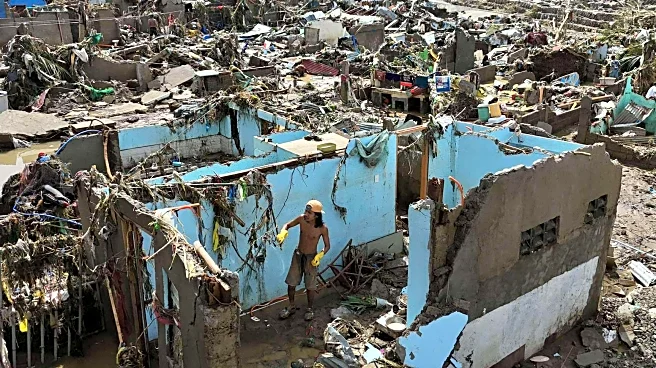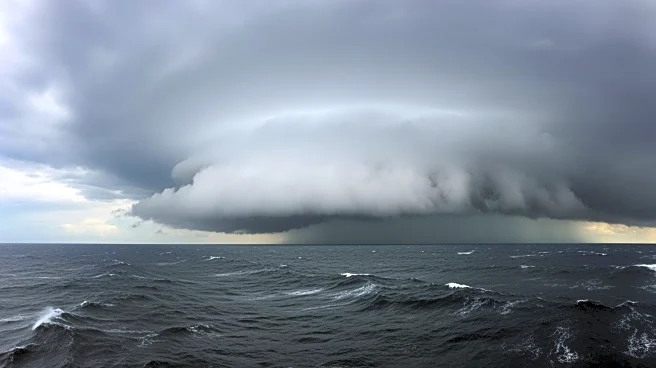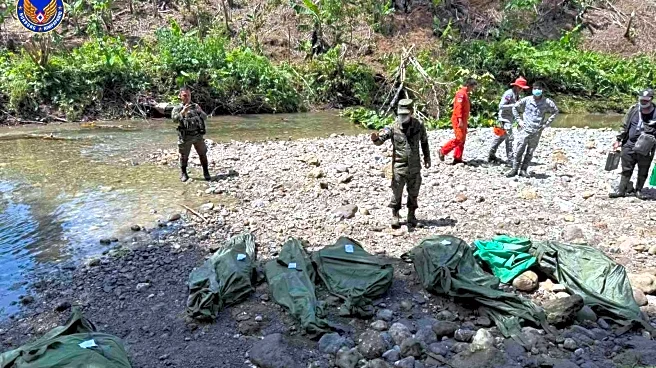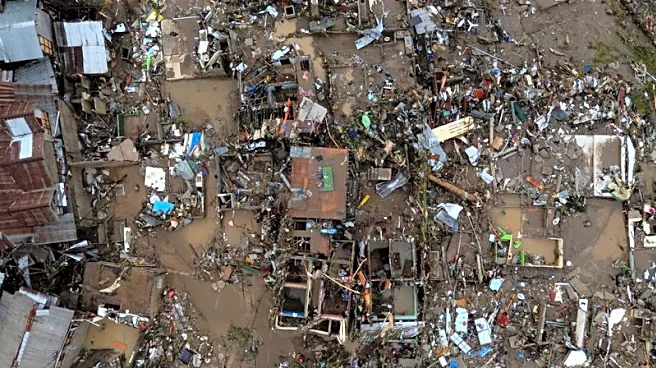What's Happening?
The U.S. Embassy in Vietnam has issued a warning to American citizens as Typhoon Kalmaegi approaches the Vietnamese coast. The storm, which has already caused significant damage in the Philippines, killing
at least 114 people, is expected to make landfall in central Vietnam, north of Quy Nhon. The Joint Typhoon Warning Center has upgraded the storm to a Category 4, indicating its increased strength as it nears Vietnam. Vietnamese authorities have initiated mass evacuations from low-lying coastal areas to mitigate the impact of the typhoon, which is the 13th to hit Vietnam this year. The Vietnam National Center for Hydro-Meteorological Forecasting has warned of potential waves up to 26 feet and storm surges of up to 2 feet, along with high winds possibly exceeding 84 miles per hour.
Why It's Important?
The approaching typhoon poses a significant threat to Vietnam, particularly to densely populated areas like Ho Chi Minh City, which could experience severe flooding due to the combination of high tides and heavy rainfall. The U.S. Embassy's warning underscores the potential risks to American citizens in the region, advising them to follow local authorities' directions. The storm's impact could exacerbate existing infrastructure vulnerabilities, leading to increased risks of flooding, flash floods, and landslides. The situation highlights the ongoing challenges faced by Vietnam in dealing with frequent and intense typhoons, which have implications for public safety, economic stability, and disaster preparedness.
What's Next?
As Typhoon Kalmaegi makes landfall, it is expected to lose strength while moving northwest towards Cambodia, Thailand, and Laos. The focus will shift to recovery efforts in Vietnam, particularly in areas already affected by previous flooding. Authorities will likely continue to monitor the storm's progression and coordinate with international partners to manage the aftermath. The U.S. Embassy will remain vigilant in providing updates and support to American citizens in the region. The broader implications for regional disaster management and climate resilience may prompt further discussions on improving infrastructure and emergency response systems.













